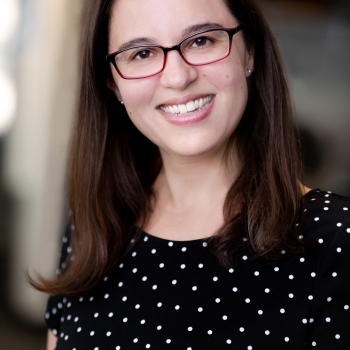By
Published
October 2, 2020
Tags
As the ongoing pandemic asks us to protect one another by staying apart, it has been difficult to remain at home, distanced from the activities many of us turn to for social, emotional and spiritual fulfillment.
Many organizations across the Jewish sector are working to meaningfully engage young Jews in digital spaces during this time and are rightfully asking questions about how to create the most impactful virtual events that breakthrough the “Zoom fatigue” many people are experiencing.
New research from the Schusterman Family Foundation and Jim Joseph Foundation explores this question and provides organizations with substantive guidance. The research reveals the importance of designing virtual gatherings intentionally by centering attendees’ emotional experience alongside the high-quality content prioritized for in-person gatherings. The research looks specifically at young Jewish Americans ages 18-40; however, the findings can apply to a wide range of sectors and organizations.
So what makes one virtual event more effective than another? Successful virtual events stand out by meeting one or more of three key needs: community, fulfillment and fun.
Great virtual events leave participants feeling happy, relaxed, connected and twice as likely to attend another event by the same or another organization. Poorly executed or unsatisfying virtual events, on the other hand, can have a negative effect on participants, leaving them more tired, disconnected and frustrated, and more than 50% less likely to participate in another event by any organization.
You can read more about the findings of the research here.
Our research offers insights on how to measure the impact of Jewish engagement opportunities when it comes to qualities such as fulfillment, fun and community.
Indeed, we often speak with grantees about the struggle to develop and measure program outcomes. It can be challenging to measure changes that may not present for some time and to identify measures to track progress toward those outcomes along the way.
This research points to emotion as a leading indicator of outcomes—individuals who felt positively after an event (happy, connected, relaxed, empowered) were more likely to feel the event was a worthwhile use of their time, tell others about their experience, engage in a new ritual or practice at home, and attend another virtual event.
While output measures like satisfaction and feelings have been measured less often, this research shows that measuring these outputs can be an important indication of progress toward successfully engaging and retaining participants.
As we design for virtual events that include both content and emotional goals, we also need to design for how we measure both. To that end, we are sharing the survey questions from our own research to consider including in your next post-program survey or program evaluation.
How satisfied were you with the experience?
- Very satisfied
- Somewhat satisfied
- Not very satisfied
- Not satisfied at all
How did you feel after the event? Please select all that apply.
- Anxious
- Awkward
- Connected
- Disconnected
- Empowered
- Frustrated
- Happy
- Informed
- Invigorated
- Lonely
- Relaxed
- Tired
- Uncomfortable
- Something else __________
Would you attend or participate in an event hosted by [organization name] again?
- Definitely
- Probably
- Might or might not
- Probably not
- Definitely not
When events meet the most pressing needs of young Jews—when they laugh even if they also feel overwhelmed, when they meet someone new and feel just a little less alone, when they discover a new ritual to help them mark time during endless weeks—that is when the content can make a difference.
How are you designing for and measuring virtual engagement?
Rella Kaplowitz is the Senior Program Officer for Evaluation and Learning at the Charles and Lynn Schusterman Family Foundation, making sure the Foundation has the right information to strengthen its work. During the pandemic, Rella and her family are finding community, fulfillment and fun through virtual tot Shabbats and storytime with cousins, family art time, Challah baking and dance parties.
Stacie Cherner is the Director of Learning and Evaluation at the Jim Joseph Foundation where she oversees the research and evaluation work of the Foundation. She and her husband are in California, living (with one Wi-Fi connection) with a teenager and young adult who are also trying to find community, fulfillment and fun online and offline.








